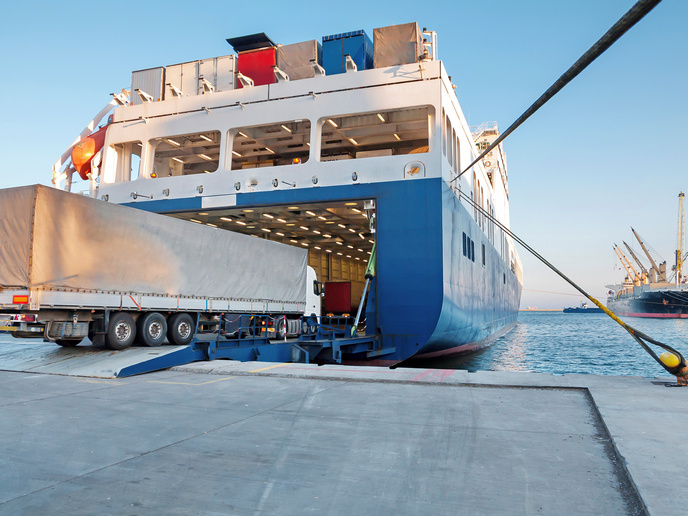
‘Shipping needs to reduce its emissions,’ said Anders Öster, research manager at Wärtsilä, a Finnish engineering company. ‘That’s why we need to find solutions to make ships more efficient, and to decarbonise their propulsion.’
Global emissions from maritime transport are over a billion tonnes of CO2 per year, and the industry has proven hard to decarbonise due to the powerful engines needed to propel modern container ships. The EU-funded SeaTech project developed a pair of innovative, reciprocating technologies that can significantly cut fuel consumption and therefore emissions.
Coordinated by Öster, the SeaTech research, conducted between 2020 and late 2023, included both shipping companies and academic partners such as the University of Southampton in the UK, the National Technical University of Athens and the University of Tromsø in Norway. It developed two key technologies that can be retrofitted to existing ships and thereby have a rapid impact on the sector’s emissions.
Wave power
Inspired by the movement of whales and dolphins through water, the researchers attached a dynamic underwater wing, similar to the front fins of a hammerhead shark, to the front of the 10-metre-long model ship.
The wing, which harnesses wave power to help drive the ship forward, was tested both in wave tanks and in the Aegean Sea. The researchers found that it generates thrust, particularly in choppy seas, allowing engines to reduce their output.
‘These wings take the energy from waves and thrust the ship forward,’ says Öster. ‘They also stabilise the ship’s movements.’
Dual-fuel engine
In addition, the SeaTech team developed a dual-fuel engine that uses liquified natural gas in addition to heavy fuel oils, producing less methane and carbon dioxide. They used sensors and software to control the combustion process in a ship’s gas-powered engine, improving its efficiency.
‘Compared to diesel engines, our gas engine emitted one-third less CO2,’ said Öster. The two innovations work particularly well together, he says, because the engine control software can respond quickly to the same conditions that determine the power output of the wings. The result is more than the sum of its parts, says Öster.
The researchers found that, taken together, the two technologies could reduce diesel-powered ships’ CO2 emissions by 46%.
‘One plus one equals three when we combine these technologies. By taking different technologies and combining them, we strengthen their performance,’ said Öster.
MORE INFORMATION
CORDIS project factsheet: SEATECH
This is an abridged version of an article by Tom Cassauwers originally published in Horizon, the EU Research and Innovation magazine.
- Reference
- SOCIETAL CHALLENGES - Smart, Green And Integrated Transport
- Project duration
- 1 Jun 2020 - 30 Nov 2023
- Project locations
- EstoniaFinlandGreeceNetherlandsNorwayUnited Kingdom
- Overall budget
- €6 478 472
- EU contribution
- €4 999 24377.2% of the overall budget
- Project website
- SEATECH project website
- Departments
- European Climate, Infrastructure and Environment Executive Agency
